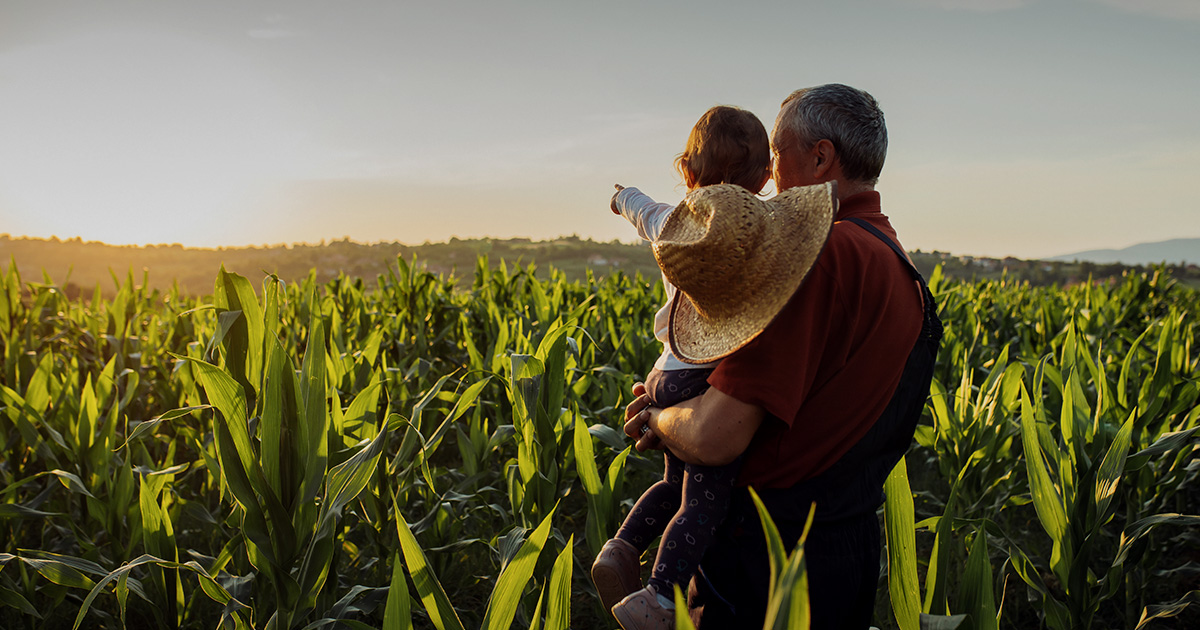The Contoura Algorithm: Embodying Comfort, Performance, and Support
Our proprietary shape algorithm used for the INSITE® Contoura® insole combines the science of custom orthotics with modern footwear design.

Farmers who are making a shift to regenerative farming practices are having an enormous impact on companies’ access to more ethical biomaterial sourcing. In this introduction to carbon capture and sequestration, we’ll explain the value of these practices for both the environment and the material goods economy.
Carbon capture, or carbon sequestration, is a component of regenerative agriculture that carries important benefits for the land, its crops, and the environment.
As more farmers shift to regenerative farming practices, the buzz around carbon capture farming and its multitude of benefits has trickled into the world of manufactured goods. Companies looking to become more sustainable are becoming increasingly concerned with how their materials are sourced – and regenerative farming gives those companies a great option to change their sourcing practices.
Regenerative farming practices are better for the environment, and result in ingredients for material goods that are more ethically and responsibly produced.
It’s important to recognize that switching from traditional to regenerative farming practices is no small feat for farmers– it requires a major shift from decades of conventional growing methods to something completely new. In addition to the financial investment, there is an education and training component, as well as an acceptance of a potential short-term lower yield before the sustainable shift begins to pay off.
Fortunately, there is a lot of incentive for farmers to make the shift, not least of which is the interest from companies to pursue more sustainable materials sourcing.

Regenerative farming promotes soil health and soil coverage by applying a series of specific practices when planting, managing, and harvesting crops. Applying regenerative farming techniques to the soil ultimately captures more carbon and improves water intake, reducing carbon emissions and water waste.
Regenerative farming practices include:
Carbon capture is a natural byproduct of regenerative agriculture practices because of the way the soil is managed.
Each aspect of regenerative farming results in improved soil health, which allows the soil to hold on to carbon rather than releasing it into the atmosphere. Carbon emissions, as we know, are not good for the environment; plus, the soil is far healthier with carbon than without.
Carbon has many benefits for soil:
When compared with the environmental drawbacks attributed to carbon release (as well as the many other ways carbon is emitted into the atmosphere that have nothing to do with soil), regenerative farming is one significant way to make a difference while at the same time influencing the sourcing of materials that make up our everyday products.
For example, INSITE Insoles produces insole foams that are made with a percentage of corn produced by regenerative farming. Not to be confused with the sweet corn we use as a food source, we rely on dent corn, which is produced specifically for non-food purposes.
We work with our materials sourcing partner Susterra® to ensure our corn comes from farms that employ regenerative practices, so we know our corn is responsibly and sustainably sourced using carbon capture techniques.

For family farms that have been around for generations, making the switch to regenerative agriculture requires a leap of faith, a lot of work, and a lot of support.
Susterra® works with farmers to get them involved in the Truterra program, which was launched in 2016 by Land O’ Lakes and is designed to help farmers succeed in a switch to regenerative farming.
Much of the regenerative farming happening across the U.S. wouldn’t be possible without the Truterra program. The program provides education, financial support, and a network of farmers who have also made the shift.
Truterra also tracks the environmental impact of 100% of participating acreage, giving farmers critical information to reinforce that their efforts are paying off.
Since 2021, the Truterra program has helped participating farmers sequester roughly 500,000 tons of carbon, which is equivalent to removing 1.2 million cars from the road annually. That statistic is certainly not something to balk at.
The Truterra program – and regenerative agriculture in general – has helped raise awareness around something that is often overlooked or simply lost in today’s click-and-ship economy.
The way materials are sourced matters. The places your goods come from, and the methods behind their production, matter.
It’s not enough to use plant-based products in place of non-renewable resources like petroleum. Of course it’s helpful, but if the ingredients in those plant-based products aren’t sourced responsibly, the negative environmental impact is very present.
Brands and consumers alike should be paying attention to the effects farming has on land and the environment, and the more aware we all become about the benefits of regenerative farming, the more this trend will continue to gain momentum.
The result will be greater support for the farms and the farmers working hard to make this change, as well as better quality products produced with a more minimal impact on the environment.
Our proprietary shape algorithm used for the INSITE® Contoura® insole combines the science of custom orthotics with modern footwear design.
If you’re wondering, “Do I need arch support?” you’re not alone – the need for arch support, and what type, can be hard to determine. Here’s what you should know.
With so much information out there, it can be easy to believe insole myths and harder to know exactly what insole needs you may have, and why.